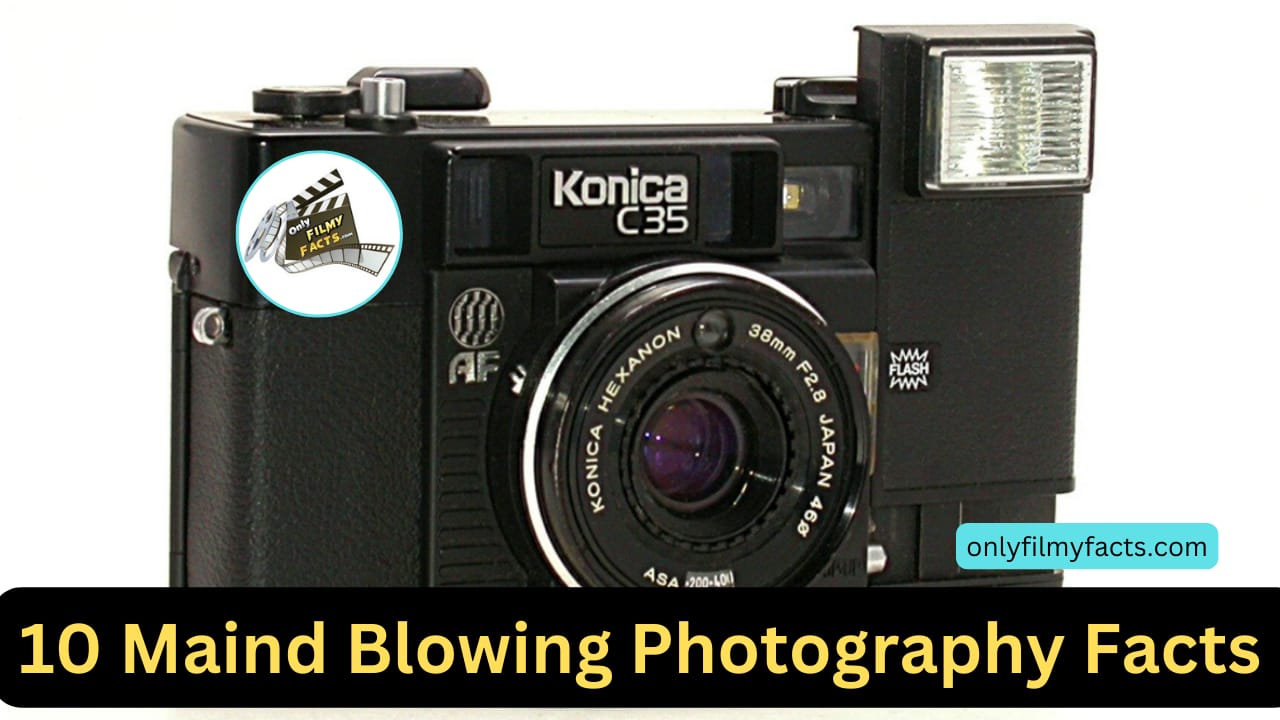If you enjoyed reading about mind-blowing photography facts, here are 10 more that you will find fascinating.
1. The World’s 1st Color Photograph Was Taken Over 150 Years Ago
Physicist James Clerk Maxwell first described the modern 3 color process we use for color photographs in a paper in 1855. Thomas Sutton was the first to put it to use in 1861, when he took a photo of a colorful bow. Due to the material’s lack of sensitivity to green and near complete insensitivity to red, the image was somewhat flawed. The picture’s relatively inaccurate portrayal is thought to have been produced by ultraviolet, blue-green, and blue wavelengths. Nonetheless, it was the beginning of the same fundamental process we use for creating color images today.
2. The First Flashes Could Literally Kill You
One of the 1st methods of producing artificial light for a photo was by using a mixture of magnesium powder and potassium chlorate spread onto a surface, then ignited. This resulted in a literal explosion, and the volatile compound could explode by accident and cause catastrophic injuries.
3. The First Mass-Produced Autofocus Camera Came Out in 1977
Autofocus has been around for quite a while now. The Visitronic AF system, created by Honeywell, was utilised by the Konica C35 AF when it was released in November 1977. Over a million of the cameras were sold as a result of their great popularity. Later, the Pentax ME-F (1981) became the first 35mm SLR with auto focus, while the Polaroid SX-70 Sonar One Step (1978) became the first SLR camera with auto focus. You can see the camera in the lead image of this article (by John Nuttall, used under Creative Commons).
4. The First Aerial Photograph Was Taken in 1858

Believe it or not, the 1st aerial photograph was taken way back in 1858 by Gaspard Félix Tournachon from a tethered balloon 1,600 feet in the air above Paris. Sadly, the photograph’s did not survive to the present. The 1st surviving aerial photographs were taken two years later in Boston by James Wallace Black from a hot air balloon (the Queen of the Air) piloted by Samuel Archer King. Black took eight exposures at an altitude of 1,200 feet, from which he got one good image, known as Boston, as the Eagle and the Wild Goose See It.
5. We Take More Pictures Every 2 Minutes Than the Entire 1800s
That is right. Every 2 minutes, people take more pictures than were taken in total across the entire 19th century. In fact, actuality people take well over a trillion photos a year now. It is more than just that, though. The average American is captured by some sort of camera 75 times a day (surely, that the number is down a bit right now with the pandemic), a number that surprised even me.
6. Photoshop Has Been Around Since 1987
Photoshop is already in its fourth decade. It was first created in 1987 by the Knoll brothers, Thomas and John. In 1988, they went on to sell Adobe the distribution licence. When Thomas, a PhD candidate at the University of Michigan, wrote a programme to enable grayscale images to be shown on a monochrome monitor, Photoshop was born. After seeing the programme, Thomas’s brother John recommended that he turn it into an editing application. Thomas obliged, taking a six-month sabbatical from his PhD to do so. After Adobe purchased the distribution license the following year, Photoshop 1.0 would be released in 1990, with the first Windows version appearing in 1993.
7. The Aperture of the Human Eye
The eye is pupil can open as wide as about 6 to 7 mm. This translates to a maximum aperture of about f/2.1 in the dark, making it a fairly well-performing low-light device! It can close to an aperture of roughly f/8.3, which is not incredibly narrow, on the other end of the range. This clarifies why we still squint or require sunglasses in intense sunlight. The way an eye refracts light differs from that of an air-filled camera, so determining the aperture range of the eye necessitates careful calculation of the corresponding focal length.
8. The World’s Most Expensive Camera
Think Hasselblads and Phase Ones are expensive? They are nothing compared to this Leica 0-Series (no. 122). The camera was one of only 25 made as a test run of 35mm film cameras in 1923, designed in Germany to see if users would enjoy them. Only 12 are known to be surviving today. The no. 122 sold at the West Licht Photographica auction in Vienna, Austria on March 12, 2018, with a starting price of $492,000. In the end, a private collector would purchase it for an astounding $2.97 million.
9. The U.S. Dropped Film From Space Back to Earth

The Cold War led to all sorts of advances in surveillance technology and as a result, all sorts of interesting photographic tidbits. A spy satellite that operated between 1971 and 1986 was called HEXAGON. Considering the size of spacecraft, these satellites were enormous, measuring 60 feet in length and 30,000 pounds each. These were nicknamed “Big Bird” as a result. Designer of the “optical bar” panoramic camera system on the satellite, Phil Pressel, stated: “This is still the most complicated system we’ve ever put into orbit, period.”
Each satellite carried a whopping 60 miles of 6-inch wide film, and each exposure would capture images of a 370-mile-wide area. This resulted in resolutions of about Three feet, quite impressive for the time. Each mission would last 124 days, after which the satellite would launch four film return capsules, which were then captured in mid-air by waiting aircraft. Interestingly, one of the film capsules from the first mission was missed by the recovery aircraft and sank three miles deep in the Pacific Ocean. The Navy’s Deep Submergence Vehicle Trieste II managed to find the capsule and recover it in April of 1972 from a depth of over 16,000 feet.
10. Photography facts: The World’s First Selfie Was Taken in 1839
The selfie is one of the most pervasive cultural consequences of photography, but you might be surprised by how early the 1st selfie was taken. Robert Cornelius took the world’s first selfie via the daguerreotype process all the way back in 1839. The image was taken as he stood in the yard that was behind the lamp store owned by his family in Philadelphia. The Library of Congress says the exposure took between 3 and 15 minutes. Cornelius would then go on to open his own photography business.

